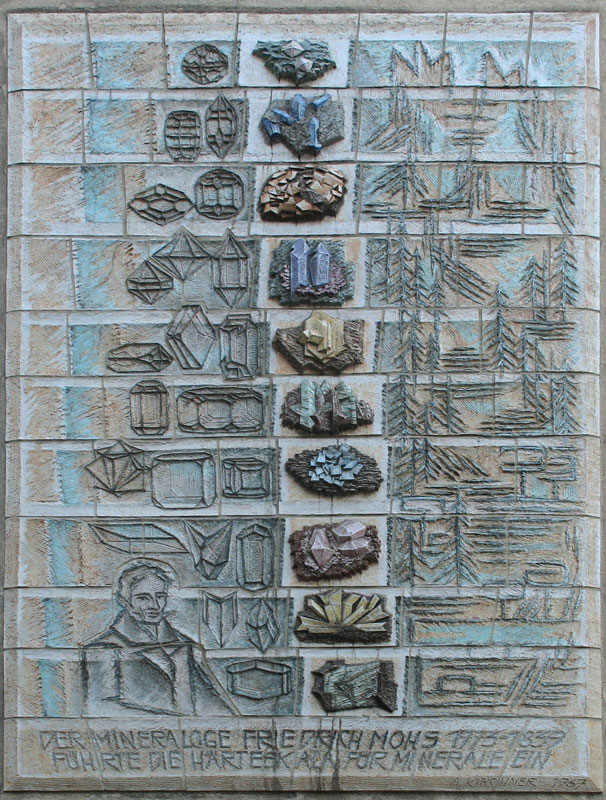Knowledge
04.01.2021 The hardness of gemstones
When is a mineral considered a gemstone? When it is rare? Or when it is especially beautiful? In reality, most gemstone definitions include hardness.
In the past, stones that did not have a certain “gemstone hardness” were generally referred to as semiprecious stones. Today, this term is rarely used commercially because it can be misleading. People generally refer to jewels or jewelry stones instead.
To be considered a true gemstone, a stone must have a Mohs hardness rating of at least 7.

MOHS SCALE OF MINERAL HARDNESS
Over time, various units of measurement, tests, and scales have been developed for determining the hardness of materials. In mineralogy, and therefore in connection with gemstones, the Mohs scale is generally used. This scale was developed by the German geologist Friedrich Mohs in the early 19th century.
A hard material will scratch a softer material. However, soft materials cannot scratch harder materials. Based on this fact, Mohs developed his scale of scratching hardness.
Each position on the scale corresponds to a reference material that can scratch another material. Therefore, the scale is not linear; for example, feldspar is not twice as hard as calcite.
| Mohs hardness | Reference material | Comment |
| 10. | Diamond | Scratches corundum, cannot be scratched by any other material |
| 9. | Corundum | Scratches topaz |
| 8. | Topaz | Scratches quartz |
| 7. | Quartz | Scratches window glass |
| 6. | Orthoclase feldspar | Can be scratched with a steel file |
| 5. | Apatite | Can be scratched with a knife |
| 4. | Fluorite | Can easily be scratched with a knife |
| 3. | Calcite | Can be scratched with a copper coin |
| 2. | Gypsum | Can be scratched with a fingernail |
| 1. | Talc | Can be scraped with a fingernail |


Minerals in gemstone hardness
To be considered a true gemstone, a jewel must have a certain hardness.
Minerals with a Mohs hardness of 1 to 2 are considered soft; those with a hardness of 3 to 5 are medium-hard; and minerals with a hardness of 6 or more are hard. Minerals with a Mohs hardness of 7 or higher are considered very hard, which is usually the minimum requirement for a gemstone.
Diamond is the hardest material there is, with a Mohs hardness of 10. Synthetic moissanite has a Mohs hardness of 9.5 and would theoretically be the second hardest gemstone. However, because it is synthetically produced, it cannot be considered a gemstone.
The highly sought-after ruby and sapphire are members of the corundum family and have a Mohs hardness of 9.
They are followed by topaz and beryl, which have a Mohs hardness of 7.5 to 8. Beryl includes emeralds, aquamarines and other colored varieties of the mineral. Spinel also has a hardness of 8, tourmaline lies between 7 and 7,5 and tanzanite ranges from 6.5 to 7.

Other hardness ratings
In addition to the Mohs scale, two other hardness scales are sometimes used in connection with gemstones and minerals: The Rosiwal scale and the Vickers hardness test. Rosiwal’s absolute scale measures the hardness of materials based on their abrasive resistance. The Vickers test measures a material’s ability to resist plastic deformation from a standard force.

